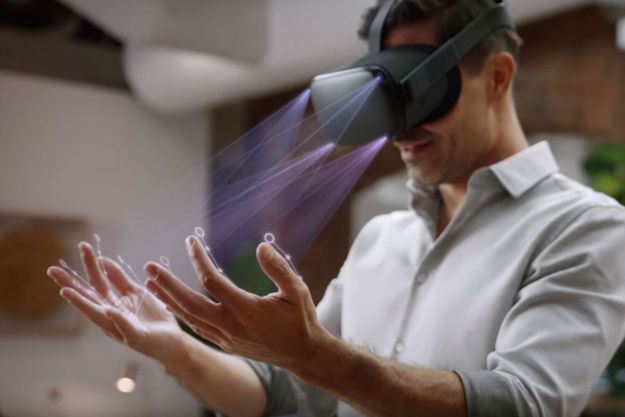A group of researchers think they may be on to a solution, however, and they showed it off at last week’s SIGGRAPH conference. Developed by researchers at the Tokyo and Unity Technologies Japan, the project calls for a new type of “Visuo-Haptic” VR experience, which reportedly creates the illusion of an infinite virtual corridor in a “play space” measuring just 16 feet by 22 feet.
Called “redirected walking,” the technology basically tricks the subject’s brain into thinking that he or she is walking in a straight line when, in fact, the subject is walking on a slight curve. Extrapolate that slight curve into a full circle and it essentially creates a limitless play space in which someone could walk forever without hitting a wall — or realizing they’re walking in circles.
“This work uses the ‘Visuo-haptic redirected walking’ [concept], which is a novel efficient redirected working technique by utilizing haptic cues for strongly modifying our spatial perception,” Takuji Narumi, one of the researchers on the project, tells Digital Trends. “Since the combination of visual and haptic sensations strongly alters our spatial perception in agreement with visual representation, the system effectively reduces the required space for infinite walking.”

Narumi says that the researchers are already speaking with several companies about the technology, and that he could see it working well in a “theme park or amusement attraction” setting. While the technology currently requires users to touch a wall to guide themselves and enhance the effect, he also hopes that long term this can be done away with.
“We can demonstrate haptic cues enhances the effect of the redirected walking technique,” he says. “[But] for actual usage, using the static wall is a limitation of our method. We would like to investigate the effect of ‘active’ haptic cues provided by some kind of haptic interfaces. By doing so, we may eliminate walls from the proposed method by presenting haptic sensations with haptic interfaces, and extend applicability of our method.”
Editors' Recommendations
- Solving VR’s ‘infinite walking’ problem with moon boots
- The future of immersive VR? ‘Chemical haptics’ applied to your skin
- Amazon’s new AR app lets you have fun with all those Prime Day boxes
- Saatchi AR tool lets you test out paintings on your wall before you buy them
- Iconic music venue will present live gigs you can watch in VR from your home


